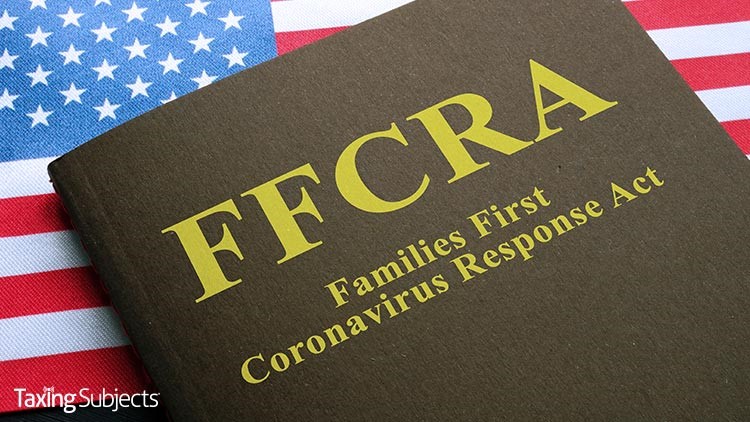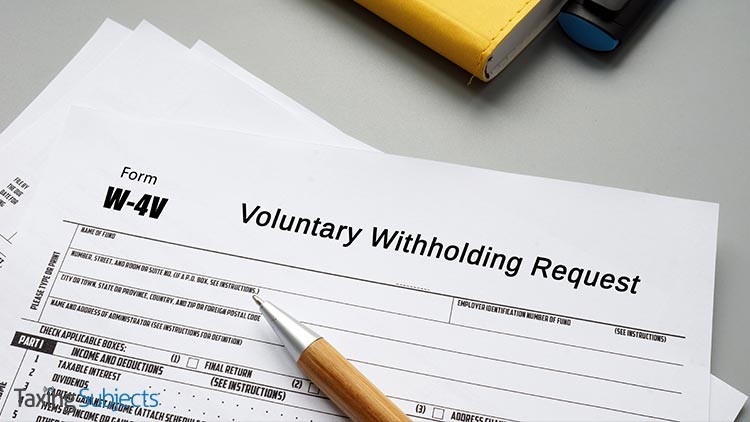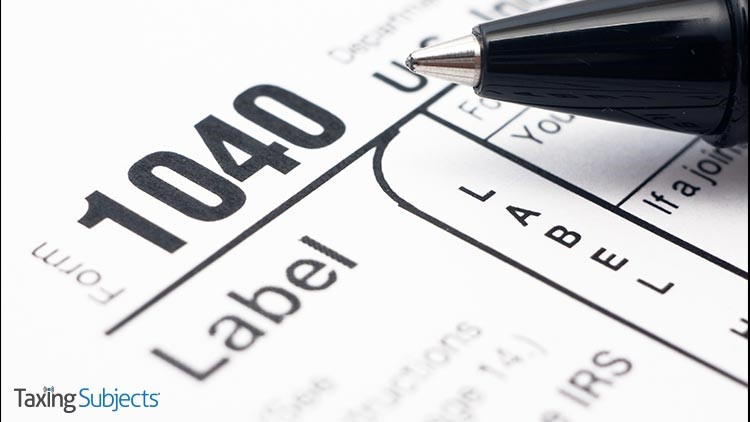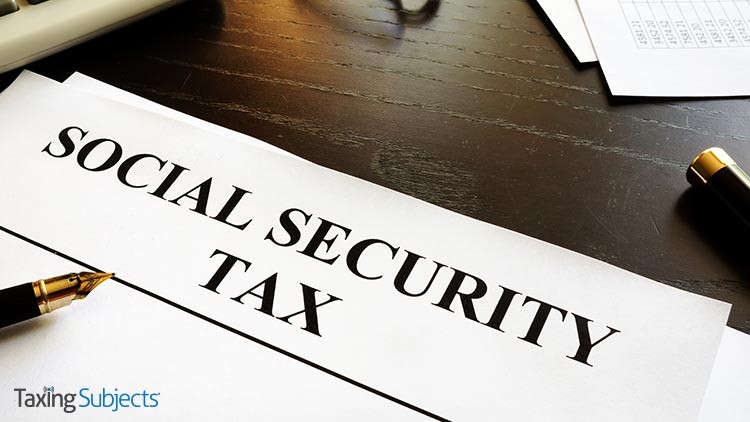by | Jan 28, 2021 | Tax Tips and News
Small and midsize companies have been particularly hard hit over the past year by COVID-19. And while those employers been stretched to their limits by paying out large sums for sick leave and family leave due to the pandemic, some help is available.
The Families First Coronavirus Response Act, or FFCRA, became law in March 2020. The law provides refundable tax credits to small and midsize employers so they can be reimbursed, dollar-for-dollar, for the cost of providing COVID-19 sick leave and family leave wages to their employees.
The FFCRA is targeted at companies with fewer than 500 employees. It gives eligible employers funds to provide their employees with paid sick leave, medical leave, and family leave related to COVID-19—whether for the employee’s own health needs or to care for others.
The U.S. Department of Labor’s Wage and Hour Division administers FFCRA’s provisions.
Generally, the law provides that employees of covered employers are eligible for:
- Two weeks (up to 80 hours) of paid sick leave at the employee’s regular rate of pay where the employee is unable to work because the employee is quarantined (pursuant to Federal, State, or local government order or advice of a health care provider), and/or experiencing COVID-19 symptoms and seeking a medical diagnosis; or
- Two weeks (up to 80 hours) of paid sick leave at two-thirds the employee’s regular rate of pay because the employee is unable to work because of a bona fide need to care for an individual subject to quarantine (pursuant to Federal, State, or local government order or advice of a health care provider), or to care for a child (under 18 years of age) whose school or child care provider is closed or unavailable for reasons related to COVID-19, and/or the employee is experiencing a substantially similar condition as specified by the Secretary of Health and Human Services, in consultation with the Secretaries of the Treasury and Labor; and
- Up to an additional 10 weeks of paid expanded family and medical leave at two-thirds the employee’s regular rate of pay where an employee, who has been employed for at least 30 calendar days, is unable to work due to a bona fide need for leave to care for a child whose school or child care provider is closed or unavailable for reasons related to COVID-19.
The Labor Department says small businesses with fewer than 50 employees may qualify for an exemption from the requirement to provide leave due to school closings or child care unavailability if the leave requirements would jeopardize the viability of the business as a going concern.
The FFCRA covers this paid leave by providing small businesses with refundable tax credits. Similar credits are also available to some self-employed individuals.
How do employers get the paid sick leave tax credits?
Employers are entitled to a fully refundable tax credit equal to the required paid sick leave they funded. The tax credit also includes the employer’s share of Medicare tax imposed on those wages and “its allocable cost of maintaining health insurance coverage for the employee during the sick leave period.”
Eligible employers are not subject, however, to the employer portion of Social Security tax imposed on those wages.
Similar conditions apply for credits to reimburse qualified family leave wages.
Employers claiming the tax credits can retain an amount of all federal employment taxes equal to the amount of qualified leave wages paid, plus the allocable qualified health plan expenses and the amount of the employer’s share of Medicare tax imposed on those wages. Payment of these amounts to the IRS can be deferred until Jan. 3, 2022, according to Notice 2021-11.
Originally, the deferred deposits of the withheld amounts from qualified employees would have been due no later than April 30, 2021, as detailed in Notice 2020-65. But that was expanded in late 2020 to stretch the deferment period to Jan. 3, 2022.
If the federal employment taxes yet to be deposited aren’t sufficient to cover the eligible employer’s cost of qualified leave wages, allocable qualified health plan expenses and the amount of the employer’s share of Medicare tax on those wages, the employer can file a request for an advance payment from the IRS using Form 7200, Advance Payment of Employer Credits Due to COVID-19.
Employers claiming any of the leave credits must keep records and documentation supporting each employee’s leave to substantiate the claim for the credits. They should also retain Forms 941, Employer’s Quarterly Federal Tax Return, and Form 7200, Advance Payment of Employer Credits Due to COVID-19.
For more information on required paid leave and the associated credits, see the Labor Department’s Families First Coronavirus Response Act: Employee Paid Leave Rights, and the Frequently Asked Questions on Coronavirus leave provisions on the IRS website.
– Story provided by TaxingSubjects.com
by | Jan 27, 2021 | Tax Tips and News
The Department of Labor reported a staggering 75.9 million initial unemployment insurance benefits claims from January 5, 2020 to January 2, 2021. The number of weekly claims spiked in March, underscoring the devastating financial impact of the COVID-19 pandemic and creating millions of first-time unemployment recipients who might not realize that those benefits are taxable.
Tax professionals are uniquely positioned to help their current and prospective clients avoid a surprise tax bill from their unemployment benefits. After all, losing a job can be a traumatic—often sudden—experience, and learning the ins and outs of unemployment tax liability while frantically trying to make ends meet can be an uphill struggle.
Why are unemployment insurance benefits taxable?
Unemployment insurance benefits are considered taxable income. “By law, unemployment compensation is taxable and must be reported on a 2020 federal income tax return,” the IRS explains. “Taxable benefits include any of the special unemployment compensation authorized under the Coronavirus Aid, Relief, and Economic Security (CARES) Act, enacted this spring.”
While many taxpayers may not realize unemployment payments are taxable, it might also come as a shock that withholding is not automatically taken from those benefits. As with other taxable income, recipients have two options for handling their unemployment tax bill:
- Choosing to withhold tax from each unemployment payment
- Making quarterly estimated tax payments
The IRS says that taxpayers who want to choose withholding need to “fill out Form W-4V, Voluntary Withholding Request, and give it to the agency paying the benefits” instead of the IRS. Further, “if the payor has its own withholding request form, use it instead.” The agency lists the following types of payments as eligible for withholding:
- Benefits paid by a state or the District of Columbia from the Federal Unemployment Trust Fund
- Railroad unemployment compensation benefits
- Disability benefits paid as a substitute for unemployment compensation
- Trade readjustment allowances under the Trade Act of 1974
- Unemployment assistance under the Disaster Relief and Emergency Assistance Act of 1974, and
- Unemployment assistance under the Airline Deregulation Act of 1978 Program
Depending on taxpayers’ individual circumstances, withholding might not be enough to satisfy their tax liability. Quarterly estimated payments can make up the difference, but those who have only ever had taxes withheld from their paychecks may not understand the process. That’s when Form 1040-ES, Publication 505, and a qualified tax professional come in handy.
How do taxpayers determine the amount they should withhold from each unemployment payment?
The IRS recommends checking the IRS Tax Withholding Estimator on IRS.gov to help calculate withholding—especially when unemployment recipients return to work.
Taxpayers who received unemployment in 2020 need to check their mailbox
Whatever agency is actually responsible for paying a taxpayer’s unemployment compensation in 2020 will send Form 1099-G, Certain Government Payments, this month. The IRS says the form “[shows] the amount of unemployment compensation they received during 2020 in Box 1, and any federal income tax withheld in Box 4.”
Where can taxpayers find more information about unemployment benefits?
Taxpayers looking for additional unemployment information not included in the above-listed forms and publications should check the “Unemployment Benefits” section of Publication 525, Taxable and Nontaxable Income.
The good news is that vaccine distribution has already begun. Unfortunately, some estimates predict masks, social distancing, and possible lockdowns could be required until the fall or winter—meaning more taxpayers may need to take advantage of unemployment insurance benefits until we’re on the other side of the pandemic.
Sources: IR-2020-185; Department of Labor, “Seasonally Adjusted US Weekly UI Claims (in thousands),” Jan. 21, 2021
– Story provided by TaxingSubjects.com
by | Jan 26, 2021 | Tax Tips and News
No matter what strategy taxpayers use to get their income taxes filed, gathering critical documents now can help make this tax season headache-free.
No matter whether taxpayers do their own taxes or employ the services of a tax professional, rounding up necessary records such as W-2s, 1099s, receipts, canceled checks and other documents can mean the difference in supporting claims of income, deductions or credits – or not.
The Internal Revenue Service says taxpayers should gather all their year-end income documents now so they can file a complete and accurate 2020 tax return and avoid a delay in receiving any refund.
Most taxpayers will get some sort of income documents near the end of January. These can include:
- Forms W-2, Wage and Tax Statement
- Form 1099-MISC, Miscellaneous Income
- Form 1099-INT, Interest Income
- Form 1099-NEC, Non-Employee Compensation
- Form 1099-G, Certain Government Payments; like unemployment compensation or state tax refund
- Form 1095-A, Health Insurance Marketplace Statements
Need More Information? Go Online
Taxpayers can access the latest information available about their federal tax account and most recent tax returns by using a secure and convenient tool on the IRS website. It’s the most direct way to get information from last year’s returns.
The IRS says in the coming weeks, individuals with an account on IRS.gov/account will be able to view the amounts of the Economic Impact Payments they received as well as the latest information available about their federal tax account.
Eligible individuals who did not receive the full amounts of both Economic Impact Payments can claim the Recovery Rebate Credit on their 2020 federal tax return. But in order to claim the full amount of the Recovery Rebate Credit, taxpayers will need to know the amount of the Economic Impact Payments they actually received.
For more information visit Secure Access: How to Register for Certain Online Self-Help Tools and learn how to create an account or how to reset the username or password.
Reminder: Unemployment Compensation is Taxable
Millions of Americans got unemployment compensation in 2020 – many of them for the first time. But it’s not free money. Such compensation is indeed taxable and must be included as gross income on their tax returns.
Taxpayers who got unemployment compensation during 2020 should receive a Form 1099-G showing their unemployment income. Taxpayers can elect to have federal taxes withheld from their unemployment benefits or to make estimated tax payments, but many do not make that choice.
In that case, taxes on their benefits will be paid when the 2020 tax return is filed. Therefore, taxpayers who did not have tax withheld from their payments could see a smaller refund than expected or even have a tax bill due.
Those who get a Form 1099-G for unemployment compensation they didn’t receive should contact their state tax agency and ask for a corrected Form 1099-G. The IRS says states shouldn’t issue Forms 1099-Gs to taxpayers they know to be identity theft victims involving unemployment compensation.
Victims of identity theft involving unemployment compensation should not file an identity theft affidavit with the IRS.
More information on taxable unemployment compensation can be found in Tax Topic 418, Unemployment Compensation, or in Publication 525, Taxable and Nontaxable Income, on IRS.gov.
Some Can Use 2019 Income for EiTC
Taxpayers who had income under $56,844 in 2020 may be eligible to claim the Earned Income Tax Credit. The IRS EITC Assistant can help determine who is eligible for the credit.
The EITC can be worth as much as $6,660 for a family with children or up to $538 for taxpayers without a qualifying child.
This tax season there’s a new rule that can help people affected by a job loss or a change in income in 2020. Under the COVID-related Tax Relief Act of 2020, taxpayers can elect to use their 2019 earned income to figure the credit if their 2019 earned income is more than their 2020 earned income.
The same is true for the Additional Child Tax Credit. For details, see the instructions for Form 1040 or Publication 596, Earned Income Credit.
Get Help Online
IRS tax help is available 24 hours a day, seven days a week on the official IRS website, IRS.gov. That’s where people can find answers to their tax questions and resolve tax issues online from the safety of their homes. The Let Us Help You page can help to answer most tax questions while the IRS Services Guide links to other important IRS services.
– Story provided by TaxingSubjects.com
by | Jan 23, 2021 | Tax Tips and News
The Internal Revenue Service closed out the week by reminding taxpayers that receiving a tax refund by direct deposit is faster and more flexible than traditional paper checks, even for those who do not currently have a bank account. To help convince the remaining 20 percent of taxpayers to make the jump to direct deposit, the IRS emphasizes that it’s easy to set up and—perhaps more importantly—free of charge.
How do I set up direct deposit for my tax refund?
Getting a tax refund issued by direct deposit is straightforward. Taxpayers only need to tell their paid tax return preparer or select the direct-deposit option when using a do-it-yourself tax preparation software, then provide their routing number and account number listed on the checks associated with their bank account. Those who don’t know where to find that information can generally find it on a paper check tied to their bank account, by logging into their bank account online, or in a mobile banking application.
The IRS also lists three other ways to get direct deposit-capable routing and account numbers:
- Online bank accounts
- Mobile banking applications
- Certain prepaid debit cards
The agency notes that taxpayers who don’t have a bank account can use the Federal Deposit Insurance Corporation (FDIC) or, if a veteran, the Veterans Benefits Banking Program (VBBP) to create an account.
Choosing direct deposit gives taxpayers options for their tax refund
Aside from getting a tax refund much faster, the IRS says that choosing direct deposit gives taxpayers flexibility in how they receive their money.
“A taxpayer can split their refund by using tax software or by using Form 8888, Allocation of Refund (including Savings Bond Purchases), if they file a paper return,” the IRS explains. “Some people use split refunds as a convenient option for managing their money, sending some of their refund to an account for immediate use, and some for future savings.”
What’s the easiest way to track a tax refund?
The IRS created the “Where’s My Refund?” online tool to help taxpayers conveniently track the status of their tax return, which provides daily updates about what the agency calls the “three stages” of filing a return:
- Return Received,
- Refund Approved, and
- Refund Sent.
Taxpayers can learn more about direct deposits by watching this IRS YouTube video: https://www.youtube.com/watch?v=2mfpKTx-5nE
Source: IR-2021-19
– Story provided by TaxingSubjects.com
by | Jan 22, 2021 | Tax Tips and News
A recently released notice allows employers who elected to defer certain employees’ taxes to withhold and pay those deferred taxes throughout 2021—instead of just the first four months of the year.
The action comes in Notice 2021-11 which has been released by the Internal Revenue Service.
It started with a presidential memorandum signed on Aug. 8, 2020 that led to Notice 2020-65 being issued on Aug. 28, giving employers the option to defer certain employees’ Social Security taxes from Sept. 1, 2020, to Dec. 31, 2020.
The deferment applies to employees who are paid less than $4,000 every two weeks—or an equivalent amount for other pay periods—with each pay period considered separately.
These taxes are technically called Old Age, Survivors and Disability Insurance or OASDI, and are calculated at 6.2% of employees’ wages.
Same taxes, more time
Originally, any taxes deferred under Notice 2020-65 are withheld and paid ratably from employee wages between Jan. 1, 2021 and April 30, 2021.
However, Notice 2021-11 expands that payment period: “…this notice modifies Notice 2020-65, 2020-38 I.R.B. 567 (Sept. 14, 2020), by extending the time period during which employers must withhold and pay Applicable Taxes (as defined in Notice 2020-65 and described herein). Specifically, this notice provides that the end date of the period during which employers must withhold and pay Applicable Taxes is postponed from April 30, 2021, to Dec. 31, 2021, and associated interest, penalties, and additions to tax for late payment with respect to any unpaid Applicable Taxes will begin to accrue on Jan. 1, 2022, rather than on May 1, 2021,” Notice-2021-11 states.
Payments made by Jan. 3, 2022, will be considered timely, since Dec. 31, 2021, is a legal holiday. Penalties, interest and additions will now start to apply on Jan. 1, 2022 for any unpaid balances.
Employees could see their deferred taxes being collected immediately. The IRS recommends they check with their company’s payroll contact on what their collection schedule will be.
For more information on this and other tax relief relative to the COVID-19 pandemic, check out the IRS website at IRS.gov.
– Story provided by TaxingSubjects.com
by | Jan 22, 2021 | Tax Tips and News
The Internal Revenue Service has issued a notice that seeks to expand relief for funds and investors affected by the COVID-19 pandemic.
Notice 2021-10 provides additional relief under section 7508A of the Internal Revenue Code for Qualified Opportunity Funds (QOFs) and their investors relating to the coronavirus pandemic.
Specifically, the notice extends relief already spelled out in Notice 2020-39, 2020-26 I.R.B. 984 that applies to QOFs and their investors.
What are the key provisions of Qualified Opportunity Fund relief?
While Qualified Opportunity Funds received one round of relief in 2020, this latest notice expands on that in a number of key areas:
The 180-day investment requirement for QOF investors: A taxpayer has a 180-day window to make an investment in a QOF that satisfies requirements. If the last day of the investment period falls on or after April 1, 2020, and before March 31, 2021, the last day of that 180-day investment period is pushed back to March 31, 2021.
The 30-month substantial improvement period for QOFs and Qualified Opportunity Zone firms: The original rules for Qualified Opportunity Funds also set out a specified 30-month period to make substantial improvements to the property held by an QOF or other Qualified Opportunity Zone business.
This new notice says the period starting on April 1, 2020 and ending on March 31, 2021 “is disregarded in determining any 30-month substantial improvement period.”
Other relief measures: This notice also provides additional relief pursuant to section 1400Z-2(f)(3) and Income Tax Regulations under section 1400Z-2 of the Code (section 1400Z 2 regulations).
Many of the extensions and additional relief are automatic; Qualified Opportunity Funds do not have to call the IRS or send letters or other documents to the agency to get the relief. However, certain steps may be needed and additional forms completed to be filed with the QOF’s federal income tax return.
See the notice and Form 8996 instructions for more details.
– Story provided by TaxingSubjects.com






